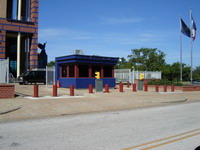Federal Reserve bails out distressed banking system
The distressed banking system will be recovered with the help of the Federal Reserve.

While much of the focus among investors has been on what the Fed will do with short-term interest rates, the central bank quietly began tinkering with its own rules in August to infuse billions of dollars of liquidity into a marketplace paralyzed by the intensifying credit crisis.
That change allowed bank holding companies to potentially gain access to depositor-insured funds that previously had been largely walled off from being used by the companies' riskier broker-dealer units.
It is not surprising that Fed officials are not using the word "bailout" to describe what they've done. Their party line is that Fed's primary mission is to keep the economy afloat during these turbulent times. If its actions happen to help troubled banks and lenders along the way, lucky for them.
It may be hard to see anything fortunate in the current state of the credit markets. Starting in the middle of the summer, it became increasingly clear that the fallout from the collapse in the housing and mortgage markets was spreading into what looked to be a full-blown credit crisis.
Lenders everywhere tightened their borrowing standards, making it more difficult for individuals to obtain home loans or companies to finance stock buybacks and acquisitions. At the same time, investors got nervous about buying risky credit products, and that led many corners of the debt market to largely shut down, including the commercial paper market where companies raise cash to fund their operations on a short-term basis.
Such conditions have wreaked havoc at many commercial banks and investment banking firms. Many were on the hook to fund billions in home loans or private-equity acquisitions, expecting that they would be able bundle the loans into securities they could slice into parts and sell to investors.
One way many of them chose to do that was to create complex structured investment vehicles, or SIVs. While the going was good, such involvement paid off handsomely. Then the credit market seized up and the SIVs are now looking like multibillion dollar albatrosses.
The Fed has tried to ease the liquidity crunch that has ensued. It encouraged banks to borrow directly from its discount window and cut the rate for those loans by one-half of percentage point to 5.75 percent in August.
Then it slashed its federal funds rate in September by a bigger-than-expected half a percentage point to 4.75 percent, the first decline in its key overnight lending bank rate since 2003. Its policy-makers will meet again Oct. 30-31.
Those were classic moves from the playbook of the lender of last resort, as the Fed and other central banks are known to be. But the Fed went even further and is catching some flack for its separate decision to waive a rule intended to prevent banks from making large loans to the broker-dealer units affiliated with their parent companies.
That rule, section 23A of the Federal Reserve Act, had been set up to protect a bank from losses that might occur in a broker affiliate by restricting the amount of "covered transactions" between the two to 20 percent of the bank's capital and surplus. Such limits are intended to protect the capital of the bank and its depositors, even if it means that a company's non-bank units or the parent company is decapitalized or fails, according to Christopher Whalen, managing director at Institutional Risk Analytics.
But in late August, the Fed allowed Bank of America, Citigroup and JPMorgan Chase to extend up to $25 billion (17.4 billion EUR), or up to around 30 percent of each bank's regulatory capital, to their broker-dealer affiliates, which are running into trouble now that there is no market for certain credit products.
David Kotok, chairman and chief investment officer at Cumberland Advisors, said brokers set themselves up for a fall by selling complex mortgage-back securities in recent years to the likes of hedge funds that also included a promise to provide liquidity if the hedge fund couldn't sell the investment at predetermined prices.
At the time, such guarantees did not sound like a big risk because demand for these and almost every other kind of higher-yielding investments seemed insatiable. But once the market turmoil hit, many hedge funds called on the brokers to keep their liquidity commitment.
This leaves the broker in a bind. It could be on the hook to recoup the paper, which now could be worth far less than it was just months ago. It could also have to find another buyer for the paper. If that doesn't happen, it may also have to pay a penalty to the hedge fund.
The Fed's rule change essentially lets the three large banks lend more to their broker-dealer affiliates. The loans must be guaranteed by the parent companies, have to be marked to current market rates every day and are subject to daily margin-maintanence requirements.
Those banks given the waiver declined a request by The Associated Press for additional comment on how those funds were used.
Kotok thinks the Fed's action was a smart way to help get the market functioning without the federal government subsidizing the banks' losses. It also gave the banks an opportunity to expand borrowing and use the Fed's discount window for help when needed.
"They've put a mechanism in place that wasn't there before," Kotok said. "Investors may be more inclined to buy paper knowing that there is a way to exit if they want to."
But the Fed's move has also been met with criticism from those who say it could put the banks' depositor-insured funds at risk should the market really tank. They also argue that it gives a break to the same people who helped get us into this credit mess in the first place.
"This is moral hazard of the first order," said Nouriel Roubini, a professor of economics at New York University's Leonard N. Stern School of Business and chairman of the consulting firm Roubini Global Economics. "The Fed is saying 'We will not punish you for what you have done. We will provide you with access to liquidity.' "
That certainly sounds like a bailout - even if the Fed won't say so.
Subscribe to Pravda.Ru Telegram channel, Facebook, RSS!





